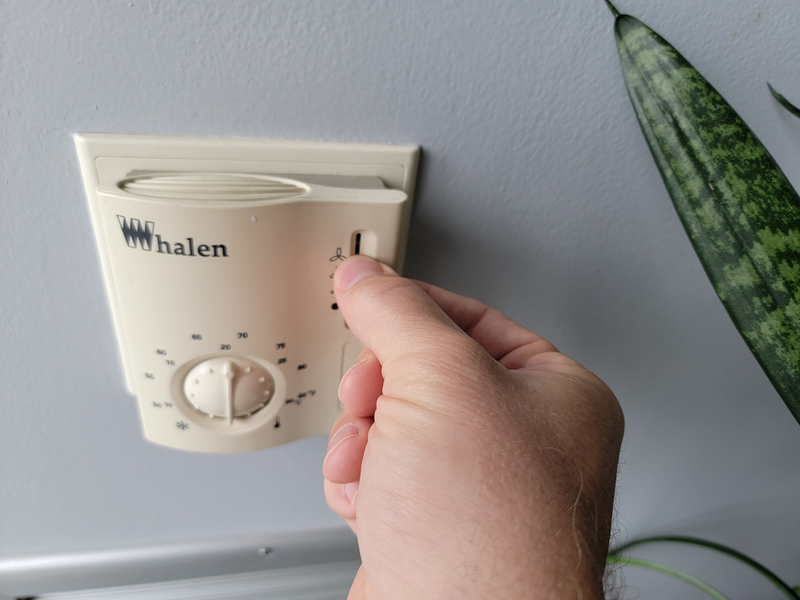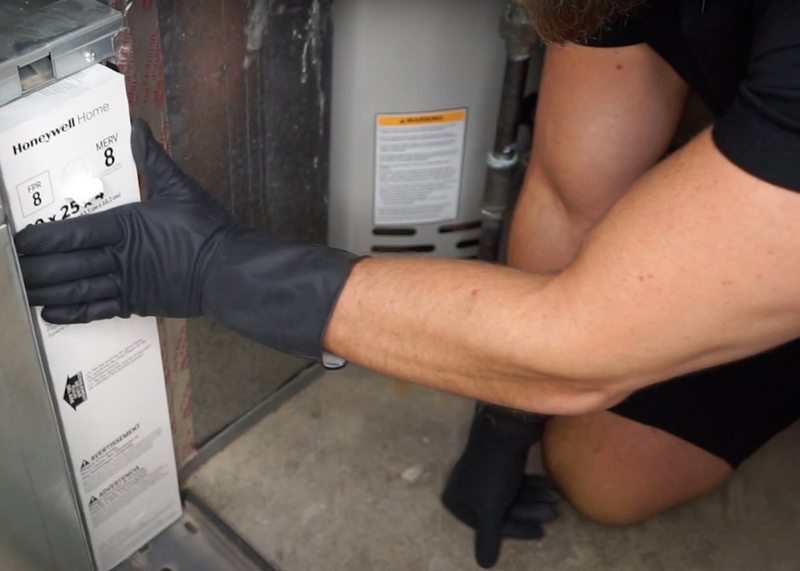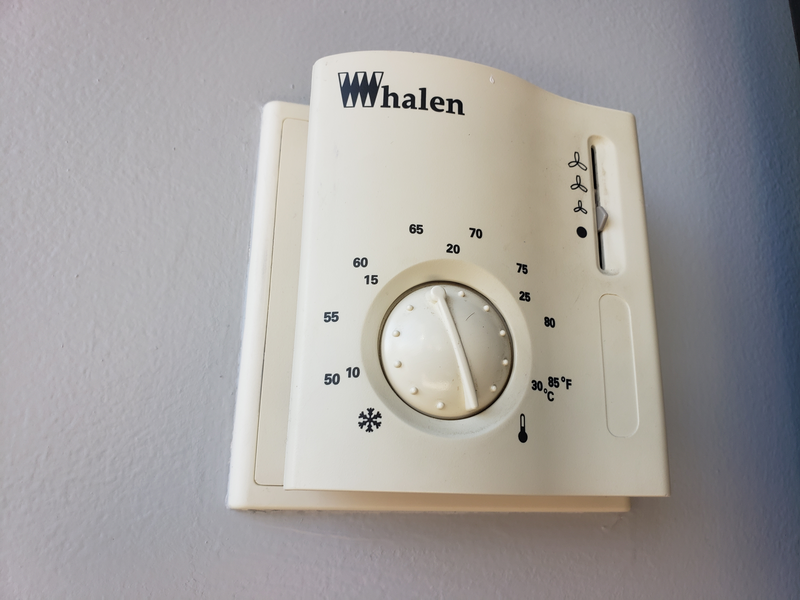- AppliancesElectriciansHVACLandscapingLocksmithPest ControlPlumbingRenovationRoofingT V RepairAll Home Improvement
- Car AccidentClass ActionCorporate LawCriminal DefenseDivorce LawEmployment LawFamily LawFinancial LawLegal AidMedical Injury LawyersMedical MalpracticeReal Estate LawWater Fire RestorationAll Legal
- InvestmentRetirementAll Finance
- Animal InsuranceAutoGeneral InsuranceHealth PolicyHome RentersAll Insurance
- DentalHealth SpecialistsAll Medical
- Animal CareVeterinaryAll Pets
- Auto GlassTowingAll Automotive
There's No Heat In My House: How to Troubleshoot

Just imagine: It’s the middle of winter, and the unthinkable happens — your heater quits working. While the thought alone is enough to send shivers down the spine of any homeowner, troubleshooting the issue is actually easier than you may think.
Read More Home Improvement Articles
Although it depends on the type of heating system you have, you might be able to solve the issue yourself, without having to call in the professionals.
Furnace Troubleshooting Tips
Check the Air Filter
Perhaps the most common cause of furnace problems is dirty, clogged filters. If the airflow out of your vents seems low, there’s a good chance it’s a clogged filter restricting airflow. When this happens, it can put strain on your furnace, causing your system to use more energy to heat your home. Like any other major appliance in your home, routine maintenance can play a huge role in its overall effectiveness and longevity. In the case of a furnace, replacing your air filters on a regular basis can help keep your HVAC system running smoothly and efficiently.
In a forced-air system, the unit pulls air out of a particular room through a return duct toward a heat exchanger that converts that air into hot air. This exchanged air is typically filtered through disposable or reusable air filters. When dust, dander and other debris accumulate on the filter, it can eventually become clogged. This not only reduces airflow and leads to inadequate heat, but it can even cause your furnace to fail entirely, leaving you with a costly repair bill.

Check the Ignition
Another common problem with furnace heaters is an issue with the system’s electronic flame sensor/ignitor. Over time, the sensor can get dirty and, as a result, won’t ignite. Cleaning the sensor is relatively easy, but it will require disassembling some elements on your furnace. If you don’t feel comfortable working on your furnace, don’t hesitate to call a licensed technician.
To clean the ignition, start by shutting off the power and gas to the furnace. Then, find the ignition by removing the front panel of the furnace and looking near the burners. Clean the ignition by rubbing it with medium-grit sandpaper. Then replace the front panel, switch on the furnace and gas and see if your heat will work. If your furnace still isn’t working, it may be time to put in a service call.
Check the Pilot Light
If your furnace is blowing cold air, it might be a signal that there’s an issue with your pilot light. Near the bottom of your furnace, you should see a switch labeled “pilot.” If the pilot light is on and working properly, you should see a small blue flame with a yellow tip. If you go to check the pilot and it’s out, you’ll need to relight it. It’s a pretty simple process, but it can be dangerous if it’s not done properly due to the threat of carbon monoxide poisoning.
The pilot switch should have both an “on” and “off” setting. If the switch is turned on, but you don’t see a flame, you’ll need to relight. Turn the switch to the “off” setting, and wait for around 10 to 15 minutes to let the gas dissipate from the chamber. Then, turn the knob to “pilot” and use the starter button to relight the light. Make sure the “on” switch is held until the light is burning steadily.
More Related Articles:
- Hiring an HVAC Tech? Here are 5 Top Tips
- What's in My HVAC Technician's Van?
- HVAC Out? 5 Common Causes and Quick Fixes for Each
- How Much Does an HVAC Filter Cost?
- HVAC Upkeep Costs: Everything You Need to Know
Boiler and Radiant Heat Troubleshooting Tips
Check the Water Levels
If your boiler is producing some heat but not enough to properly warm the house, it’s likely that there’s an issue with the water level in the boiler. If the issue is left unchecked, it can lead to the tubes overheating and potentially collapsing. To determine the correct water levels and pressure, check the gauge located at the front of the boiler. If the pressure is under 12 pounds per square inch (psi), you should add water to the system.
Mineral deposits accumulating in the boiler system can also lead to your boiler not producing enough heat. Like low water levels, this can lead to the system overheating and eventual failure of the system. Over time, minerals like calcium and magnesium can get left behind in the tank and tubes, leading to a significant reduction in heat. If you have a mineral buildup, you might also notice a loud banging noise coming from your boiler. If you suspect a mineral buildup in your system, contact a professional to flush and clean your boiler.

Check the Circuit Breaker
If your boiler isn’t producing any heat, you may want to check to make sure that the boiler is actually receiving power. While this may seem obvious, sometimes a circuit breaker can trip or a fuse can blow. Before you go any further, double-check your electrical panel or fuse box. Make sure the unit is receiving power.
Another possible reason is an issue with the circulator pump. When the pump breaks, no water can circulate, leaving you without heat. Unfortunately, replacing this part will require the help of a licensed professional.
Check the Thermostat
Perhaps the most common issue with heating is a thermostat that’s not working. If your thermostat isn’t working right, nothing else in the system will either. Start by making sure the thermostat is on and receiving power. If the thermostat doesn’t have power, you should check to see if there’s a tripped breaker or blown fuse. Most thermostats have a backup battery that will keep the thermostat running in case of a power outage. If your thermostat isn’t working, replace the battery first. There’s typically no way to repair a broken thermostat, so if you suspect yours is broken, you’ll need to replace it.

If All Else Fails...
Tried all these troubleshooting tricks, and you’re still shivering? Some components you just can’t fix on your own with parts you can find at the hardware store. Call a licensed technician to help you out.
Elocal Editorial Content is for educational and entertainment purposes only. Editorial Content should not be used as a substitute for advice from a licensed professional in your state reviewing your issue. Systems, equipment, issues and circumstances vary. Follow the manufacturer's safety precautions. The opinions, beliefs and viewpoints expressed by the eLocal Editorial Team and other third-party content providers do not necessarily reflect the opinions, beliefs and viewpoints of eLocal or its affiliate companies. Use of the Blog is subject to the
Website Terms and Conditions.The eLocal Editorial Team operates independently of eLocal USA's marketing and sales decisions.



